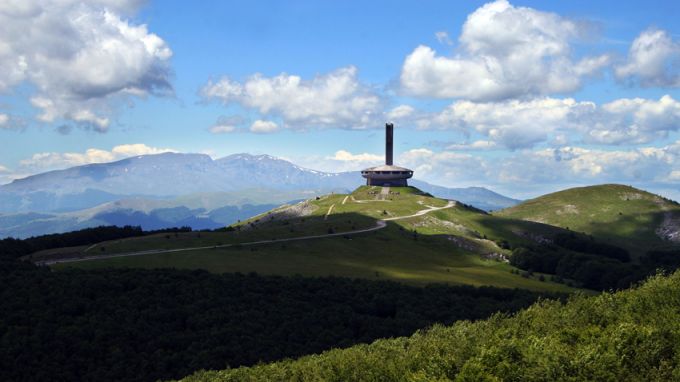 3
3
The Hadzhi Dimitar Peak on the ridge of Stara Planina, not far away from Shipka, is a place where in the summer of 1877 some of the heaviest fighting in the Russo-Turkish War took place. Today there is a fight between two different views over Bulgarian history going on here. Left to the elements and often being subject to vandalism here rises the giant concrete UFO-shaped Buzludzha monument. It was erected in 1981 as a house-monument of the Bulgarian Communist Party and this determined its fate after the democratic changes of 1989.
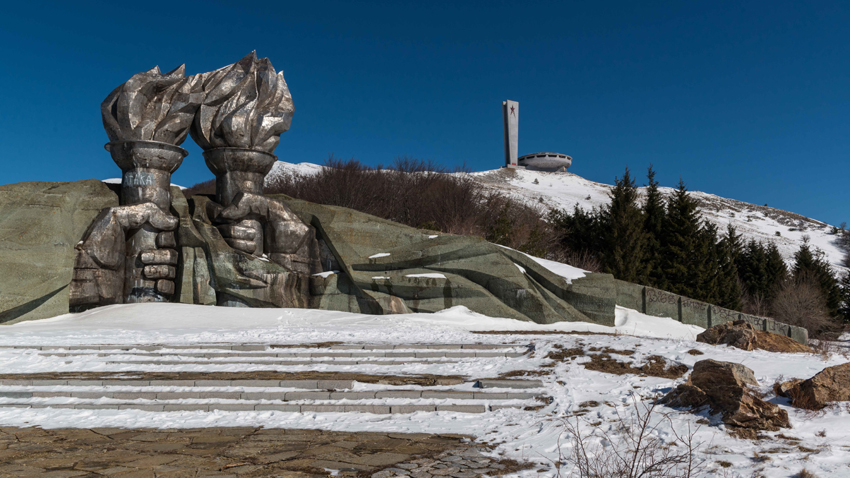
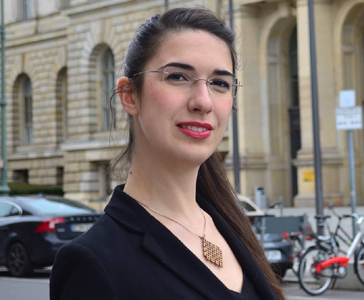 Dora Ivanova is a confident young architect, who received her education in Germany and has a career there. She has freed herself from the prejudices of time and sees the Buzludzha monument from a different angle. The theme of her thesis work became a project for the reconstruction of the monument.
Dora Ivanova is a confident young architect, who received her education in Germany and has a career there. She has freed herself from the prejudices of time and sees the Buzludzha monument from a different angle. The theme of her thesis work became a project for the reconstruction of the monument.
"I happened to find pictures of Buzludzha on the Internet. They provoked me with their strength and the very structure of the building. As an architect, I was able to look at the monument in a new way, not as an ideological object, but as an architectural masterpiece, as an achievement of Bulgarian engineering," Dora says and adds:
"6000 people worked on the building. Planning its construction took 15 years and building it took 8 years more. After that it was functional for just 8 years. Builders were working in three shifts around the clock on the mountaintop. The best Bulgarian architects, engineers and artists worked on this monument and what they did is impressive. The mountain peak was lowered by 8 meters. Some 70,000 tons of concrete and 40,000 tons of steel were used for the construction. The building is a big achievement in terms of architectural work and effect.”
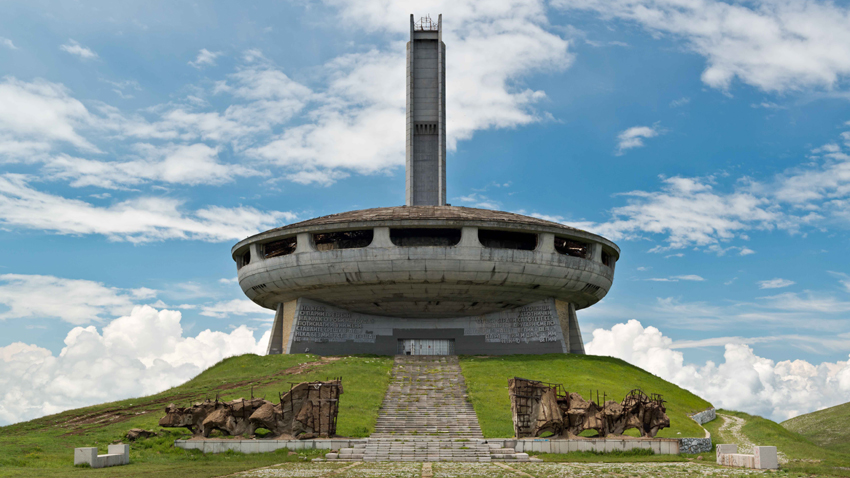
Today, visiting the monument, work of architect Georgi Stoilov, is not allowed because of its dangerous condition. However, it is still visited by many people on a daily basis. "TripAdvisor - the largest website for tourism in the world, wrote about Buzludzha. Buzludzha was also placed in various lists of the most beautiful abandoned places on the planet by people from all over the world. There are foreigners coming to Bulgaria especially to see this place," the young architect says. According to her, experts also speak positively about the building. Then what is the problem for its survival? Is it for the fear of history?
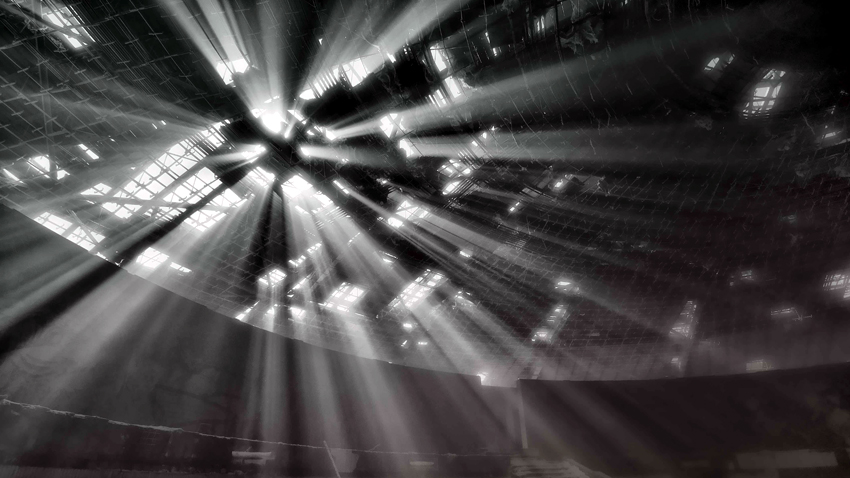
"The problem with the monuments of socialism is their identification with the period and the ideology. But I think they are artefacts of their time. I think we need to reconsider their function. Speaking about this monument always causes intense political discussions and that makes people afraid to express their opinion. The easiest attitude is indifference," the young woman says.
Dora’s project for the monument is provocative. She wants building to become a monument to the history of Bulgaria presented interactively:
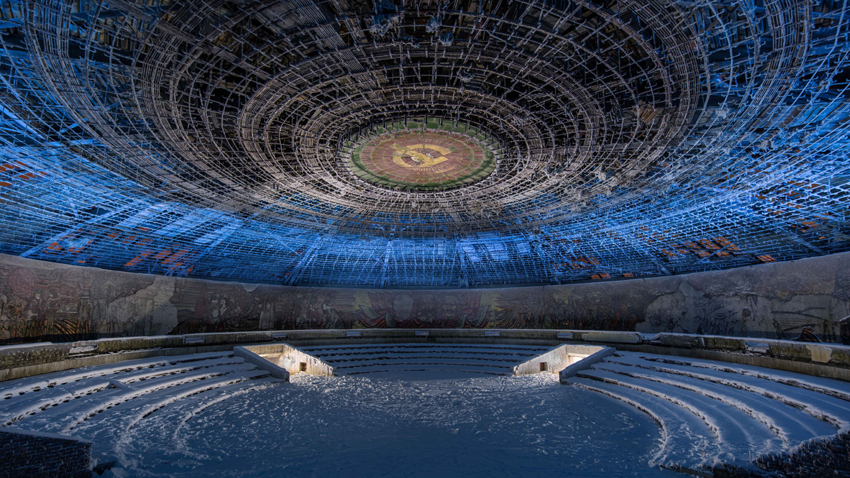
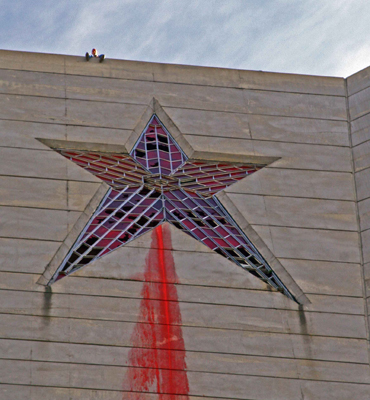 "The heart of the building is a big hall that can be converted with minimal intervention into a multipurpose hall for concerts, exhibitions and debates. The mosaics are in very good condition, representing the period of socialism and they will remain as they are. From there one passes through a long darkened corridor, symbolizing Ottoman rule over the Bulgarian lands. The oppressive atmosphere will be shown through the length of the corridor and limitations of space. In the corridor in the outer spherical body of the building where there are windows revealing a great view, one would get acquainted with the Middle Ages and the great Bulgarian victories. From there the visitor would descend into the basement to get acquainted with the history of the Thracians, Slavs and proto Bulgarians, and then one could take a panoramic lift to the top of the 70-meter-high flagpole, where the names of all Bulgarian rulers are written. The red star would remain a symbol of the socialist period, but its glass would be broken. This is a metaphor that the visitors would interpret themselves. On the last level there will be two spaces – a closed and open one. The closed one ends with a glass platform. It represents the transition period with all the fear and uncertainty associated with it. On the last level there will be a terrace with a 360-degree view, which takes the guest back to real nature and the real dimensions of Bulgaria."
"The heart of the building is a big hall that can be converted with minimal intervention into a multipurpose hall for concerts, exhibitions and debates. The mosaics are in very good condition, representing the period of socialism and they will remain as they are. From there one passes through a long darkened corridor, symbolizing Ottoman rule over the Bulgarian lands. The oppressive atmosphere will be shown through the length of the corridor and limitations of space. In the corridor in the outer spherical body of the building where there are windows revealing a great view, one would get acquainted with the Middle Ages and the great Bulgarian victories. From there the visitor would descend into the basement to get acquainted with the history of the Thracians, Slavs and proto Bulgarians, and then one could take a panoramic lift to the top of the 70-meter-high flagpole, where the names of all Bulgarian rulers are written. The red star would remain a symbol of the socialist period, but its glass would be broken. This is a metaphor that the visitors would interpret themselves. On the last level there will be two spaces – a closed and open one. The closed one ends with a glass platform. It represents the transition period with all the fear and uncertainty associated with it. On the last level there will be a terrace with a 360-degree view, which takes the guest back to real nature and the real dimensions of Bulgaria."
According of Dora, reconstruction of the building would cost some 1.3 million euro, while 13 million were spent for the construction of the building and the infrastructure in the first place. “Keep in mind inflation and that makes it almost 100 times more expensive than the resources needed for repairing it today. Entrance fees and organising events in the hall could provide revenues," the architect says. According to her, the reconstruction of the site would promote the region and create new jobs. "I see Buzludzha as a necessary investment in tourism, but also in history and in addressing national psychological complexes," Dora says.
English: Alexander Markov
There are rumours and speculations that some forgeries, so good that they are not inferior to the originals, could be found among the exhibits in the museums, but at the moment a whole series of forgeries can be seen at an exhibition..
A unique statue from the Roman period of Odessos, preliminarily dated to the late 2nd to the first half of the 3rd century, has been discovered during excavation works near the train station in Varna, said archaeologists from the Varna Regional..
Petrich municipality has received an award for original promotion of the tourist destination Heraclea Sintica , Katya Stoyanova, head of the "Restoration, conservation and socialization of Heraclea Sintica" project, said this for BTA. The award..
The Patriarchal Cathedral of St Alexander Nevsky is celebrating its temple feast today. The cathedral, a symbol of the Bulgarian capital, was built "in..
On November 24, the Bulgarian Orthodox Church honors St. Catherine (Sveta Ekaterina in Bulgarian) , who was one of the most educated women of her time...

+359 2 9336 661
